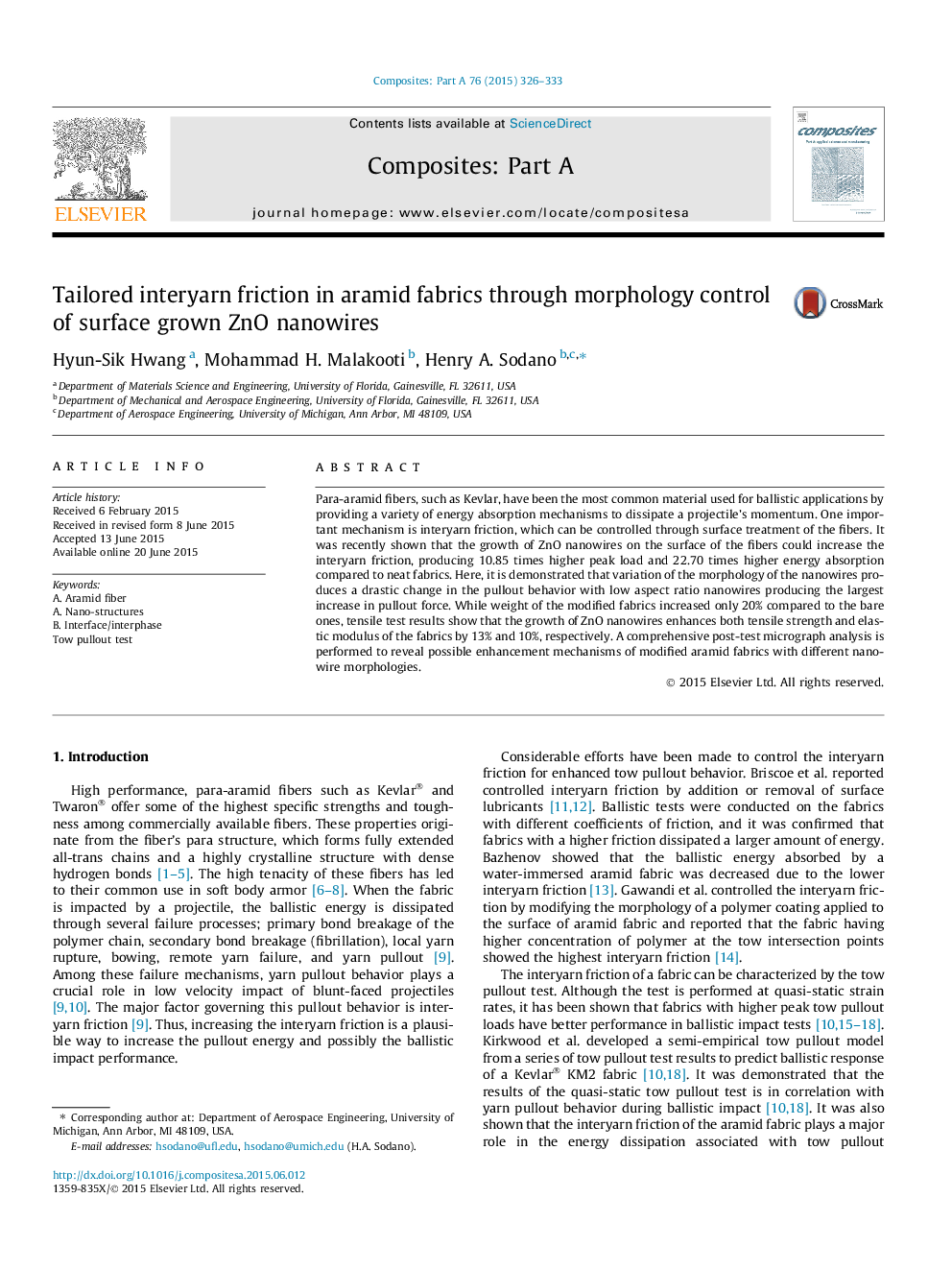| Article ID | Journal | Published Year | Pages | File Type |
|---|---|---|---|---|
| 7891719 | Composites Part A: Applied Science and Manufacturing | 2015 | 8 Pages |
Abstract
Para-aramid fibers, such as Kevlar, have been the most common material used for ballistic applications by providing a variety of energy absorption mechanisms to dissipate a projectile's momentum. One important mechanism is interyarn friction, which can be controlled through surface treatment of the fibers. It was recently shown that the growth of ZnO nanowires on the surface of the fibers could increase the interyarn friction, producing 10.85 times higher peak load and 22.70 times higher energy absorption compared to neat fabrics. Here, it is demonstrated that variation of the morphology of the nanowires produces a drastic change in the pullout behavior with low aspect ratio nanowires producing the largest increase in pullout force. While weight of the modified fabrics increased only 20% compared to the bare ones, tensile test results show that the growth of ZnO nanowires enhances both tensile strength and elastic modulus of the fabrics by 13% and 10%, respectively. A comprehensive post-test micrograph analysis is performed to reveal possible enhancement mechanisms of modified aramid fabrics with different nanowire morphologies.
Related Topics
Physical Sciences and Engineering
Materials Science
Ceramics and Composites
Authors
Hyun-Sik Hwang, Mohammad H. Malakooti, Henry A. Sodano,
